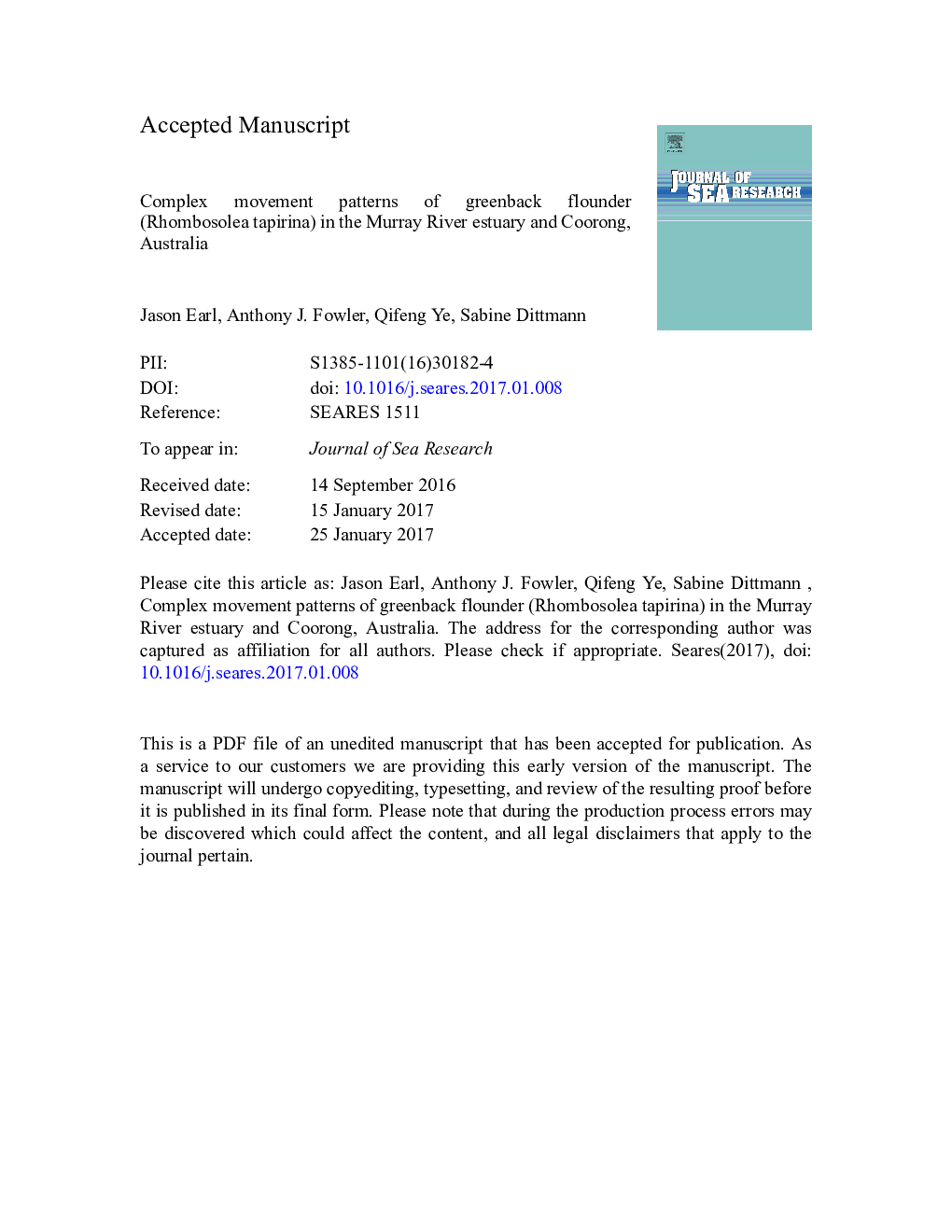| Article ID | Journal | Published Year | Pages | File Type |
|---|---|---|---|---|
| 5766110 | Journal of Sea Research | 2017 | 32 Pages |
Abstract
The greenback flounder Rhombosolea tapirina is a commercially-important flatfish species in southern Australia and New Zealand, whose population dynamics are poorly understood. Acoustic telemetry was used to assess movement patterns and area use for R. tapirina in the Murray River estuary and Coorong, South Australia. Twenty fish (221-313Â mm total length) equipped with acoustic transmitters were monitored for up to seven months during a period of high freshwater inflow. Fish were detected over a large part of the system, but showed a strong preference for brackish and near-marine conditions in the inner estuary. Tagged fish exhibited complex movement patterns that differed among individuals, including: (1) within estuary movements; (2) dispersal from the estuary to the sea; and (3) return migrations between the estuary and the sea. A diurnal shift in fine-scale area use was observed in the part of the estuary where residency was highest, with individuals occupying deeper habitats during the day and shallower areas during the night. The results demonstrate the individualistic and often highly transient behaviour of this species and its ability to undertake regular movements over the spatial scale of 10s of km. Understanding such movement patterns can improve effective management of estuarine flatfish populations and ecosystems.
Related Topics
Physical Sciences and Engineering
Earth and Planetary Sciences
Oceanography
Authors
Jason Earl, Anthony J. Fowler, Qifeng Ye, Sabine Dittmann,
